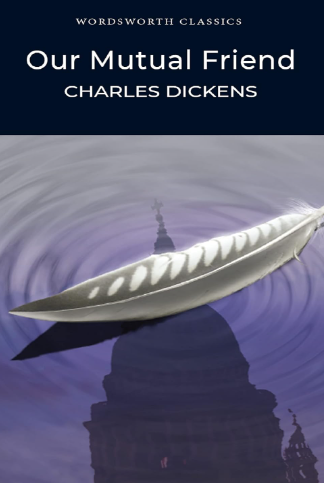Our Mutual Friend

"Our Mutual Friend," Charles Dickens' last completed novel, was serialized from 1864 to 1865. It is a complex, multi-layered narrative that explores themes of wealth, social class, and human relationships. The novel revolves around the mysterious circumstances surrounding a large inheritance and the lives of those connected to it.
The story begins with the discovery of a body in the River Thames, initially believed to be that of John Harmon, heir to a vast fortune made from dust (waste) mounds. Harmon was returning to London to claim his inheritance, which required him to marry Bella Wilfer, a beautiful but mercenary young woman he had never met. With Harmon presumed dead, the fortune passes to Mr. and Mrs. Boffin, a kind and unpretentious couple.
Unknown to everyone, John Harmon is alive. Disguising himself as John Rokesmith, he becomes the Boffins' secretary to observe Bella and the effects of the fortune. As Rokesmith, he falls in love with Bella, who initially remains focused on wealth but gradually develops deeper values through her experiences with the Boffins and her growing affection for Rokesmith.
Parallel to this main plot, several subplots unfold:
Eugene Wrayburn and Lizzie Hexam: Eugene, a disenchanted lawyer, falls in love with Lizzie Hexam, the daughter of the boatman who discovered Harmon's supposed body. Lizzie, a noble character, faces the scorn of society due to her low status. Eugene's rival, the sinister schoolmaster Bradley Headstone, also desires Lizzie and becomes violently obsessed with her.
The Veneerings and Social Satire: The novel satirizes the superficiality of the newly wealthy through characters like the Veneerings, who constantly seek social advancement through lavish parties and alliances.
Mr. and Mrs. Lammle: A couple who, after realizing they have both married for money only to find neither has any, resort to scheming and manipulation to maintain their social standing.
Jenny Wren: A doll’s dressmaker with a crippled back, Jenny is a poignant character who offers insight and comfort to Lizzie and others.
As the story progresses, the Boffins seemingly become corrupted by their wealth, but it is later revealed that Mr. Boffin's greed was a ruse to test Bella's character. Bella, who rejects wealth without love, finally marries Rokesmith, discovering his true identity as John Harmon.
The novel concludes with resolutions to the various subplots: Eugene, severely injured by Headstone, marries Lizzie in gratitude and genuine love, transforming into a better man. Headstone, consumed by his obsession, meets a tragic end. The Boffins are revealed to have always been kind-hearted, ensuring a happy future for Bella and Harmon.
Dickens excels in creating vivid, memorable characters. From the morally upright Lizzie Hexam to the cunning and troubled Bradley Headstone, each character is fully realized and contributes to the novel's intricate tapestry.
The novel provides a sharp critique of Victorian society, particularly its obsession with wealth and social status. Dickens uses characters like the Veneerings and the Lammles to satirize the pretentiousness and superficiality of the newly rich.
"Our Mutual Friend" features a multi-layered plot with numerous intertwining stories, offering readers a richly woven narrative. The mystery surrounding John Harmon’s fate and the various subplots keep readers engaged and invested in the outcomes.
The novel explores themes of personal growth and redemption. Characters like Bella Wilfer and Eugene Wrayburn undergo significant transformations, learning the true value of love, kindness, and integrity over wealth and social standing.
True to Dickens' style, the novel balances humor with pathos. The eccentricities of characters like the Boffins and Jenny Wren provide comic relief, while the struggles of Lizzie Hexam and the tragic fate of Bradley Headstone evoke deep empathy.
"Our Mutual Friend" delves into the complexities of human nature, examining how wealth and poverty can influence behavior and relationships. Dickens’ keen insight into human motivations and the consequences of societal pressures adds depth to the narrative.
In conclusion, "Our Mutual Friend" is a richly rewarding read, offering a compelling blend of mystery, social critique, and character study. Its exploration of themes like wealth, identity, and redemption, combined with Dickens’ masterful storytelling and vibrant characters, makes it a timeless classic worth reading.